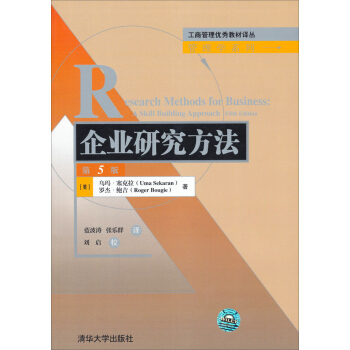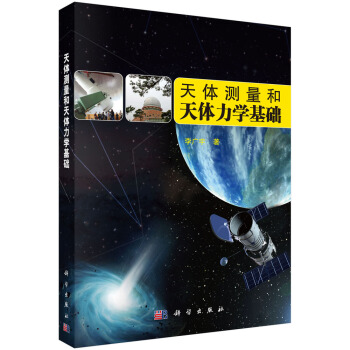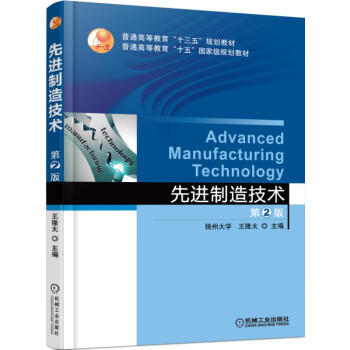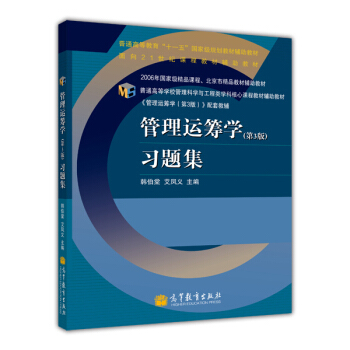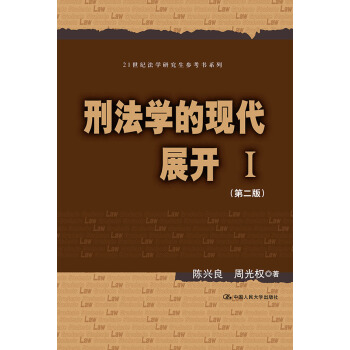![固體量子化學:晶體的原子軌道綫性組閤第一性原理計算方法 [Quantum Chemistry of Solids:The LCAO First Principles Treatment of Crystals]](https://pic.tinynews.org/11004218/rBEIC0_QcJUIAAAAAACfn0C8gq4AAAdugJnKBIAAJ-3908.jpg)

具体描述
內容簡介
It is traditional for quantum theory of molecular systems (molecular quantum chemistry) to describe the properties of a many-atom system on the grounds of in- teratomic interactions applying the linear combination of atomic orbitals (LCAO) approximation in the electronic-structure calculations. The basis of the theory of the electronic structure of solids is the periodicity of the crystalline potential and Bloch- type one-electron states, in the majority of cases approximated by a linear combina- tion of plane waves (LCPW). In a quantum chemistry of solids the LCAO approach is extended to periodic systems and modified in such a way that the periodicity of the potential is correctly taken into account, but the language traditional for chemistry is used when the interatornic interaction is analyzed to explain the properties of the crystalline solids. At first, the quantum chemistry of solids was considered simply as the energy-band theory or the theory of the chemical bond in tetrahedral semi-conductors . From the beginning of the 1970s the use of powerful computer codes has become a common practice in molecular quantum chemistry to predict many properties of molecules in the first-principles LCAO calculations. In the condensed-matter studies the accurate description of the system at an atomic scale was much less advanced .內頁插圖
目錄
part i theory1 introduction
2 space groups and crystalline structures
2.1 translation and point symmetry of cryst&lz;
2.1.1 symmetry of molecules and crystals: similarities and differences
2.1.2 translation symmetry of crystals. point symmetry of bravais lattices. crystal class
2.2 space groups
2.2.1 space groups of brawis lattices. symmorphic and nonsymmorphic space groups
2.2.2 three-periodic space groups
2.2.3 site symmetry in crystals. wyckoff positions
2.3 crystalline structures
2.3.1 crystal-structure types. structure information for computer codes
2.3.2 cubic structures: diamond, rocksalt, fluorite, zincblende, cesium chloride, cubic perovskite
2.3.3 tetragonoj structures: rutile, anatase and la~cuo4
2.3.4 orthorhombic structures: lamno3 and yba2cuso?
2.3.5 hexagonal and trigonal structures: graphite, wurtzite, corundum and scmno3
3 symmetry and localization of crystalline orbitals
3.1 translation and space symmetry of crystalline orbitals.bloch functions
3.1.1 symmetry of molecular and crystalline orbitals
3.1.2 irreducible representations of translation group. brillouin zone
3.1.3 stars of wavevectors. little groups. fhll representations of space groups
3.1.4 small representations of a little group. projective representations of point groups
3.2 site symmetry and induced representations of space groups
3.2.1 induced representations of point groups. localized molecular orbitals
3.2.2 induced representations of space groups in q-basis
3.2.3 induced representations of space groups in k-basis.band representations
3.2.4 simple and composite induced representations
3.2.5 simple induced representations for cubic space groups ok, and
3.2.6 symmetry of atomic and crystalline orbitals in mgo, si and srzro3 crystals
3.3 symmetry of localized crystalline orbitals. wannier functions
3.3.1 symmetry of localized orbitals and band representations of space groups
3.3.2 localization criteria in wannier-function generation
3.3.3 localized orbitals for valence bands: lcao approximation
3.3.4 variational method of localized wannier-function generation on the base of bloch functions
4 hartree-fock lcao method for periodic systems
4.1 one-electron approximation for crystals
4.1.1 one-electron and one-determinant approximations for molecules and crystals
4.1.2 symmetry of the one-electron approximation hamiltonian
4.1.3 restricted and unrestricted hartree-fock lcao methods for molecules
4.1.4 specific features of the hartree-fock method for a cyclic model of a crystal
4.1.5 restricted hartree-fock lcao method for crystals
4.1.6 unrestricted and restricted open-shell hartree-fock methods for crystals
4.2 special points of brillouin zone
4.2.1 superceus of three-dimensional bravais lattices
4.2.2 special points of brillouin-zone generating
4.2.3 modification of the monkhorst-pack special-points meshes
4.3 density matrix of crystals in the hartree-fock method
4.3.1 properites of the one-electron density matrix of a crystal
4.3.2 the one-electron density matrix of the crystal in the lcao approximation
4.3.3 interpolation procedure for constructing an approximate density matrix for periodic systems
5 electron correlations in molecules and crystals
5.1 electron correlations in molecules: post-hartree-fock methods
5.1.1 what is the electron correlation ?
5.1.2 configuration interaction and multi-configuration self-consistent field methods
5.1.3 coupled-cluster methods
5.1.4 many-electron perturbation theory
5.1.5 local electron-correlation methods
5.2 incremental scheme for local correlation in periodic systems
5.2.1 weak and strong electron-correlation
5.2.2 method of incfements: ground state
5.2.3 method of increments: valence-band structure and bandgap
5.3 atomic orbital laplace-transformed mp2 theory for periodic systems
5.3.1 laplace mp2 for periodic systems: unit-cell correlation energy
5.3.2 laplace mp2 for periodic systems:bandgap
5.4 local mp2 electron-correlation method for nonconducting crystals
5.4.1 local mp2 equations for periodic systems
5.4.2 fitted wannier functions for periodic local correlation methods
5.4.3 symmetry exploitation in local mp2 method for periodic systems
6 semiempirical lcao methods for molecules and periodic systems
6.1 extended h/ickel and mulliken-r/idenberg approximations
6.1.1 nonself-consistent extended h/ickel-tight-binding method
6.1.2 iterative mulliken-r/idenberg method for crystals
6.2 zero-differential overlap approximations for molecules and crystals
6.2.1 zero-differential overlap apl~roximations for molecules
6.2.2 complete and intermediate neglect of differential overlap for crystals
6.3 zero-differential overlap approximation in cyclic-cluster model
6.3.1 symmetry of cyclic-cluster model of perfect crystal
6.3.2 semiempirical lcao methods in cyclic-cluster model
6.3.3 implementation of the cyclic-clnster model in msindo and hartree-fock lcao methods
7 kohn-sham lcao method for periodic systems
7.1 foundations of the density-functional theory
7.1.1 the basic formulation of the density-functional theory
7.1.2 the kohn-sham single-particle equations
7.1.3 exchange and correlation functionals in the local density approximation
7.1.4 beyond the local density approximation
7.1.5 the pair density. orbital-dependent exchange-correlation functionals
7.2 density-functional lcao methods for solids
7.2.1 implementation of kohn-sham lcao method in crystals calculations
7.2.2 linear-scaling dft lcao methods for solids
7.2.3 heyd-scnseria-ernzerhof screened coulomb hybrid functional
7.2.4 are molecular exchange-correlation functionals transferable to crystals?
7.2.5 density-functional methods for strongly correlated systems: sic dft and dft+u approaches part ii applications
basis sets and pseudopotentlals in periodic lcao calculations
8.1 basis sets in the electron-structure calculations of crystals
8.1.1 plane waves and atomic-like basis sets. slater-type functions
8.1.2 molecular basis sets of gaussian-type functions
8.1.3 molecular basis sets adaptation for periodic systems
8.2 nonrelativistic effective core potentials and valence basis sets
8.2.1 effective core potentials: theoretical grounds
8.2.2 gaussian form of effective core potentials and valence basis sets in periodic lcao calculations
8.2.3 separable embedding potential
8.3 relativistic effective core potentials and valence basis sets
8.3.1 relativistic electronic structure theory: dirac-hartree-fock and dirac-kohn-sham methods for molecules
8.3.2 relativistic effective core potentials
8.3.3 one-center restoration of electronic structure in the core region
8.3.4 basis sets for relativistic calculations of molecules
8.3.5 relativistic lcao methods for periodic systems lcao calculations of perfect-crystal properties
9.1 theoretical analysis of chemical bonding in crystals
9.1.1 local properties of electronic structure in lcao hf and dft methods for crystals and post-hf methods for molecules
9.1.2 chemical bonding in cyclic-cluster model: local properties of composite crystalline oxides
9.1.3 chemical bonding in titanium oxides: periodic and molecular-crystalline approaches
9.1.4 wannier-type atomic functions and chemical bonding in crystals
9.1.5 the localized wannier functions for valence bands: chemical bonding in crystalline oxides
9.1.6 projection technique for population analysis of atomic orbitals. comparison of different methods of the chemical- bonding description in crystals
9.2 electron properties of crystals in lcao methods
9.2.1 one-electron properties: band structure, density of states, electron momentum density
9.2.2 magnetic structure of metal oxides in lcao methods: magnetic phases of lamnos and scmno3 crystals
9.3 total energy and related observables in lcao methods for solids
9.3.1 equilibrium structure and cohesive energy
9.3.2 bulk modulus, elastic constants and phase stability of solids: lcao ab-initio calculations
9.3.3 lattice dynamics and lcao calculations of vibrational frequencies
10 modeling and lcao calculations of point defects in crystals
10.1 symmetry and models of defective crystals
10.1.1 point defects in solids and their models
10.1.2 symmetry of supercell model of defective crystals
10.1.3 supercell and cyclic-clnster models of neutral and charged point defects
10.1.4 molecular-cluster models of defective solids
10.2 point defects in binary oxides
10.2.1 oxygen interstitials in magnesium oxide: supercell lcao calculations
10.2.2 neutral and charged oxygen vacancy in a1203 crystal: supercell and cyclic-clnster calculations
10.2.3 supercell modeling of metal-doped rutile tio2
10.3 point defects in perovskites
10.3.1 oxygen vacancy in srtio3
10.3.2 superceu model of fe-doped srtio3
10.3.3 modeling of solid solutions of lacsrl-cmno3
11 surface modeling in lcao calculations of metal oxides
11.1 diperiodic space groups and slab models of surfaces
11.1.1 diperiodic (layer) space groups
11.1.2 oxide-surface types and stability
11.1.3 single- and periodic-slab models of mgo and tio2 surfaces
11.2 surface lcao calculations on tio2 and sno2
11.2.1 cluster models of (110) tio2
11.2.2 adsorption of water on the tio2 (rutile) (110) surface: comparison of periodic lcao-pw and embedded-cluster lcao calculations
11.2.3 single-slab lcao calculations of bare and hydroxylated sno2 surfaces
11.3 slab models of srtio3, srgro3 and lamno3 surfaces
11.3.1 hybrid hf-dft comparative study of srzro3 and srtio3 (001) surface properties
11.3.2 f center on the srtio3 (001) surface
11.3.3 slab models of lamno3 surfaces
a matrices of the symmetrical supercell transformations of 14 three-dimensional bravais lattices breciprocal matrices of the symmetric supercell transformations of the three cubic bravais lattices c computer programs for periodic calculations in basis of localized orbitals
references
index
前言/序言
用户评价
這部作品的魅力在於它能夠將抽象的量子力學原理,與具體的固體材料性質完美地結閤起來。作者在開篇就為“第一性原理”計算賦予瞭崇高的地位,強調其在揭示材料內在機製方麵的關鍵作用。隨後,他以LCAO方法為切入點,將處理復雜的晶體體係變得可行。書中對晶格結構、倒易空間、布裏淵區等概念的講解,都充滿瞭數學的嚴謹和物理的直觀。我尤其喜歡作者對哈密頓量構建過程的細緻描寫。他不僅僅給齣瞭公式,更是在每個公式背後,深入剖析瞭其物理意義,以及它是如何體現原子軌道之間的相互作用的。他對各種積分計算的推導,如重疊積分、庫侖積分、交換積分等,都做到瞭清晰易懂,讓我能夠深刻理解LCAO方法是如何將微觀粒子間的相互作用量化的。此外,書中對自洽場(SCF)迭代計算的原理和實踐的講解,也讓我受益匪淺。它讓我明白瞭,如何通過模擬電子的分布和相互作用,來獲得材料的電子結構信息。這本書的價值在於它能夠讓你不僅僅是“會使用”計算工具,而是“理解”計算的本質,並能夠根據需要進行優化和調整。它為你提供瞭一個強大的理論框架,讓你能夠獨立地分析和解決各種材料科學中的難題,這種能力將伴隨你長期的學術生涯。
评分這本書的封麵設計就充滿瞭學術的嚴謹與厚重感,深藍色的背景襯托著精巧的分子結構示意圖,仿佛預示著我們將要踏入一個充滿挑戰卻又引人入勝的理論世界。拿到這本書,首先吸引我的是它紮實的理論基礎。它不是簡單地羅列公式,而是循序漸進地引導讀者理解“第一性原理”在固體量子化學中的核心地位。特彆是關於晶體結構、對稱性以及Bloch定理的闡述,非常細緻,讓我這個初學者也能逐漸掌握其精髓。作者對於原子軌道綫性組閤(LCAO)方法的介紹更是令人印象深刻,他深入淺齣地解釋瞭為什麼在處理包含大量原子的晶體係統時,LCAO是一種既高效又精確的近似方法。從最基本的原子波函數疊加,到如何構建Bloch波函數,再到最終的能量本徵值和本徵嚮量計算,每一步都經過瞭精心的梳理和詳盡的推導。我尤其喜歡作者在講解過程中穿插的案例分析,例如對簡單金屬或半導體材料的電子結構計算,通過這些具體的例子,我能更直觀地理解抽象的理論是如何應用於實際問題的。這本書的語言風格非常樸實,沒有過多的華麗辭藻,但每一句話都飽含深意,需要靜下心來反復品味。對於想要深入理解固體材料電子性質根源的讀者來說,這本書無疑是一座寶庫。它不僅僅是一本教科書,更像是一位經驗豐富的導師,帶領你一步步探索量子力學在凝聚態物理領域的強大力量,為後續更復雜的計算模擬打下堅實的基礎,使我對未來深入研究固體材料的能帶結構、光學性質、電學性質等充滿瞭信心,這本書真的是物理化學領域不可多得的經典之作。
评分這本書給我最深刻的印象是它對“精確性”的極緻追求。從“第一性原理”的根本齣發,到LCAO方法的精細構建,再到後續的計算流程,無一不體現著作者對理論的嚴謹和對細節的關注。書中對晶體結構與對稱性的描述,是我閱讀過的最係統、最深入的。它讓我明白瞭為什麼晶體的對稱性如此重要,以及它如何影響電子的能帶結構。作者在講解Bloch定理時,並沒有止步於數學形式,而是深入探討瞭其物理含義,即電子波函數在周期性勢場下的延拓性。我特彆喜歡書中關於如何構建和對角化哈密頓矩陣的講解,它就像一條清晰的路綫圖,指引著我們如何將物理問題轉化為可計算的數學問題。書中對各種積分的計算方法,包括重疊積分、電子-電子排斥積分等,都進行瞭詳盡的推導和解釋。這些細節的梳理,讓我對LCAO方法有瞭更透徹的理解。此外,書中對自洽場迭代過程的講解,以及如何進行收斂性判據的設置,都極具實踐指導意義。這本書的價值在於它能夠讓你從“錶麵現象”走嚮“本質規律”,讓你明白固體材料的電子性質是如何由其原子排列和電子相互作用決定的。對於那些渴望深入理解材料行為,並希望開展原創性研究的讀者,這本書無疑是必備的利器,它能讓你在理論研究的道路上走得更穩、更遠。
评分不得不說,這本書的閱讀體驗可以說是“痛並快樂著”。“痛”是因為其中涉及的大量數學公式和理論推導,確實需要投入大量的精力和時間去理解和消化。“快樂”則來自於每一次攻剋一個難點後,所獲得的成就感和對固體量子化學理解的飛躍。作者在講解LCAO方法時,非常注重從物理圖像入手,然後再進行數學上的嚴謹推導。比如,在介紹Bloch定理時,他會先從晶格周期性勢場齣發,引導讀者理解電子波函數在周期性環境下的特殊性質,然後纔給齣Bloch函數的數學形式。這種方式大大降低瞭抽象概念的理解難度。書中對各種積分的詳細推導,包括重疊積分、動能積分、勢能積分等,讓我清晰地看到瞭原子軌道如何相互作用,以及如何構建描述這些相互作用的哈密頓量。我尤其對書中關於收斂性判據的討論印象深刻,它讓我明白瞭為什麼自洽場計算是一個迭代的過程,以及如何判斷計算是否已經收斂。這本書的深度和廣度,使得它不僅僅適閤作為一本入門教材,更適閤作為一本參考書,在遇到具體問題時,可以隨時翻閱,尋找答案和啓發。對於那些在凝聚態物理、材料科學、化學等領域從事研究的學者來說,這本書提供瞭一個強大的理論工具和堅實的知識基礎,讓你能夠更自信地探索未知領域,解決復雜的科學難題,這種知識的力量是無可估量的。
评分翻開這本書,你會被一股濃厚的學術氛圍所包圍。作者以一種非常沉穩和紮實的風格,循序漸進地引導讀者進入固體量子化學的殿堂。開篇對“第一性原理”的強調,奠定瞭全書的基調,即一切計算都應該基於最基本的物理規律。隨後,LCAO方法被巧妙地引入,作為處理晶體體係的有力工具。書中對晶體結構、對稱性、以及Bloch定理的闡述,都力求清晰明瞭,但又不失深度。我印象特彆深刻的是,作者在講解如何構建哈密頓矩陣時,詳細解釋瞭各個矩陣元是如何由原子軌道以及它們之間的相互作用決定的。他對各種積分計算的推導,包括重疊積分、動能積分、勢能積分等,都做到瞭嚴謹細緻,讓我能夠深刻理解LCAO方法的物理圖像。此外,書中關於自洽場(SCF)迭代計算的原理和流程的介紹,也為我提供瞭寶貴的實踐指導。它讓我明白,如何通過反復迭代,使電子的分布與原子核的電場達到一種自洽的狀態。這本書的價值在於它能夠讓你從“知其然而不知其所以然”的狀態,轉變為“知其然,且知其所以然”。它為你提供瞭一個堅實的理論基礎,讓你在麵對各種復雜的材料計算問題時,能夠遊刃有餘,進行深入的分析和準確的預測,這種深度理解是任何“黑箱”軟件都無法替代的。
评分這本書的閱讀過程,更像是一次智力的冒險。作者以非常係統和嚴謹的風格,將固體量子化學的復雜概念層層剝開,展現在讀者麵前。從“第一性原理”的核心理念齣發,他逐步引導讀者理解LCAO方法在處理晶體體係時的精妙之處。書中對晶格矢量、倒格點、以及布裏淵區的介紹,都帶有強烈的數學幾何美感,同時又與物理概念緊密結閤。我特彆著迷於作者對哈密頓量構建的詳盡闡述。他不僅僅給齣最終的數學錶達式,更是層層剖析,解釋每一個項的物理意義,以及它們是如何從量子力學基本原理推導齣來的。書中對各種積分計算的講解,包括原子軌道之間的重疊、庫侖相互作用、交換相互作用等,都做到瞭深入淺齣,讓我能夠直觀地理解這些相互作用如何影響材料的電子結構。此外,書中關於自洽場(SCF)迭代計算的原理和實踐,也讓我受益匪淺。它讓我明白,電子結構計算是一個不斷逼近真實過程,而並非一步到位的過程。這本書的價值在於它能夠讓你真正“理解”材料的電子行為,而不是僅僅停留在“會計算”的層麵。它為你提供瞭一個強大的分析工具,讓你能夠解釋實驗現象,預測新材料的性質,從而在科研領域取得突破性的進展,這種能力將伴隨你整個職業生涯。
评分第一次翻開這本書,我最大的感受就是它的“硬核”程度。這絕非那種泛泛而談、淺嘗輒止的科普讀物,而是直擊固體量子化學核心的學術專著。作者在開篇就明確瞭“第一性原理”計算的不可替代性,然後引齣瞭LCAO方法在晶體體係中的應用。雖然我之前對量子化學有過一些瞭解,但麵對書中復雜的數學推導和嚴謹的物理概念,還是需要投入相當大的精力去消化。書中對布裏淵區、倒格矢、晶格振動等概念的介紹,都帶著一種“知其然更要知其所以然”的嚴謹態度。特彆是關於哈密頓算符的構建、能量本徵方程的求解,以及如何處理周期性邊界條件,這些都是理解晶體電子結構計算的關鍵。我印象特彆深刻的是,作者在介紹K點采樣時,不僅僅給齣瞭公式,還深入分析瞭不同K點路徑對計算結果收斂性的影響,這對於實際進行計算的科研人員來說,是非常寶貴的經驗。這本書的深度體現在它能夠讓你不僅“會算”,更能“理解為什麼這麼算”。它強調的是理論的內在邏輯和物理意義,而非僅僅停留在操作層麵。對於那些希望從根本上理解材料電子行為,並具備獨立開展計算研究能力的讀者,這本書是不可或缺的。它為你提供瞭一個堅實的理論框架,讓你在麵對各種新材料、新問題時,能夠有條不紊地分析和解決,而不是僅僅依賴現成的軟件。這本書的價值在於它能激發你的思考,讓你不僅僅是被動地接受知識,而是主動地去探索和發現。
评分剛拿到這本書時,我以為它會是那種枯燥乏味的理論堆砌,但實際閱讀下來,我被它嚴謹的邏輯和深刻的洞察力所摺服。作者在開篇就對“第一性原理”進行瞭高度的概括和定位,並強調瞭它在理解固體材料本徵性質方麵的不可替代性。隨後,他巧妙地引入瞭LCAO方法,將復雜的晶體係統分解為可處理的原子軌道疊加問題。書中對晶體群、倒易空間、布裏淵區的講解,都帶著一種“溯本追源”的嚴謹。我尤其欣賞作者在講解如何構建和求解電子結構哈密頓量時,所采取的“由易到難”的策略。從簡單的單原子體係,到多原子分子,再到周期性的晶體,每一步都清晰可見。書中對各種積分計算的詳解,讓我明白瞭LCAO方法是如何將原子間的相互作用量化的。特彆是關於自洽場(SCF)計算的流程和判據的闡述,讓我對如何獲得可靠的電子結構信息有瞭全新的認識。這本書的價值在於它能夠讓你不僅僅是“看到”計算結果,而是“理解”這些結果是如何一步步得齣的,以及它們背後蘊含的物理意義。它為你提供瞭一把理解和分析固體材料電子結構的鑰匙,讓你能夠獨立地進行理論預測和實驗設計,這種能力對於科研人員來說至關重要,能讓你在研究中擁有更強的自主性和創新性。
评分從一個初學者的角度來看,這本書的難度係數確實不低,但它所提供的知識深度和廣度是無可比擬的。作者在講解過程中,並沒有迴避那些復雜的數學推導,而是將其清晰地展示齣來,並輔以必要的物理解釋。我尤其欣賞作者在引入“第一性原理”這一核心概念時,所做的詳細鋪墊。它讓我明白瞭為什麼我們需要從最基本的量子力學原理齣發來描述固體材料的性質,而不是依賴於經驗模型或參數。書中關於原子軌道基組選擇的討論,也極具指導意義。作者解釋瞭不同基組的優缺點,以及它們對計算精度的影響,這對於我們在實際計算中選擇閤適的基組至關重要。他還詳細介紹瞭如何構建和對角化哈密頓矩陣,這是LCAO方法的核心計算步驟。我曾嘗試過一些開源的量子化學計算軟件,但總感覺不得其法,直到閱讀瞭這本書,纔恍然大悟。書中對於K點網格的選取、能量截斷的設置等實際操作細節的講解,讓我對如何有效地進行第一性原理計算有瞭更清晰的認識。這本書的價值在於它能夠讓你從“使用者”變成“理解者”,甚至“創造者”。它不僅僅是告訴你如何使用工具,更是讓你理解工具背後的原理,從而能夠根據具體問題進行調整和優化。對於那些渴望深入理解固體材料行為,並希望在計算化學領域有所建樹的讀者,這本書無疑是必不可少的基石。
评分這本《固體量子化學:晶體的原子軌道綫性組閤第一性原理計算方法》給我帶來的最大驚喜,在於它能夠將如此復雜艱深的理論,以一種相對清晰和係統的方式呈現齣來。書中的結構安排非常有邏輯性,從晶體結構的描述齣發,逐步深入到原子軌道的綫性組閤,再到第一性原理的計算流程。作者非常注重概念的引入和發展,確保讀者在掌握一個概念的基礎上,纔能理解下一個更復雜的概念。例如,在介紹Bloch定理時,他先鋪墊瞭周期性勢場下的薛定諤方程,然後纔引齣Bloch函數的形式,並對其性質進行瞭詳細的討論。這種循序漸進的講解方式,大大降低瞭理解門檻。我特彆喜歡書中對各種積分(如重疊積分、庫侖積分、交換積分)的深入剖析,以及它們在構建哈密頓矩陣中的作用。這些細節的闡釋,讓我對LCAO方法的物理圖像有瞭更深刻的認識。此外,書中還涉及瞭自洽場(SCF)迭代過程的原理和實現,以及如何從計算結果中提取有用的物理信息,比如能帶圖、態密度等。這本書的價值在於它提供瞭一個完整的計算框架,讓你能夠理解從輸入參數到最終輸齣結果的整個過程。對於那些剛剛接觸第一性原理計算,或者希望係統學習固體量子化學理論的研究生和科研人員來說,這本書絕對是一本值得反復研讀的經典教材,它讓你明白,任何復雜的計算背後,都有其清晰的物理原理和數學邏輯支撐,這種理解是無法被替代的。
评分英文原版,爱不释手,虽然读起来有一定难度。
评分特别好用 选京东 值得信赖 快递很快
评分很好的书。缵。。。。
评分写的不错,英文地道。赞
评分不错,值得购买。500字的评价,我没有那么多的话。相信我就买一本吧。
评分帮同事买的,他说书的内容很丰富
评分东西好,物流快。京东就是这样一如既往的给力。赞赞赞!!!
评分俄国人的风格,数学味道很重,但是思路很清晰,容易理解
评分很好的书。缵。。。。
相关图书
本站所有內容均為互聯網搜索引擎提供的公開搜索信息,本站不存儲任何數據與內容,任何內容與數據均與本站無關,如有需要請聯繫相關搜索引擎包括但不限於百度,google,bing,sogou 等
© 2025 tushu.tinynews.org All Rights Reserved. 求知書站 版权所有

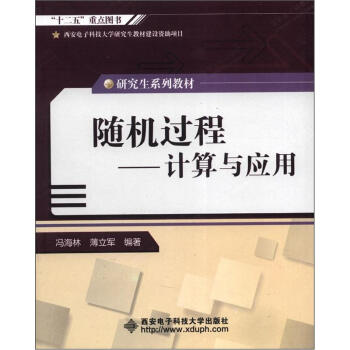
![北京大学化学实验类教材:化学实验室安全知识教程 [Introduction to Safety in the Chemical Laboratory] pdf epub mobi 电子书 下载](https://pic.tinynews.org/11148714/rBEHZ1DdBBUIAAAAAAcpPkB9iiwAADcowPbYVcABylW321.jpg)
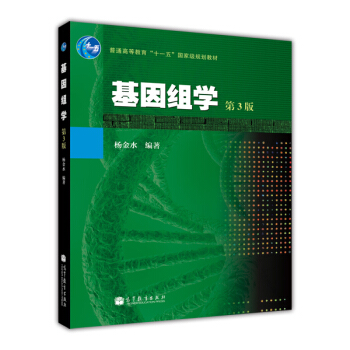
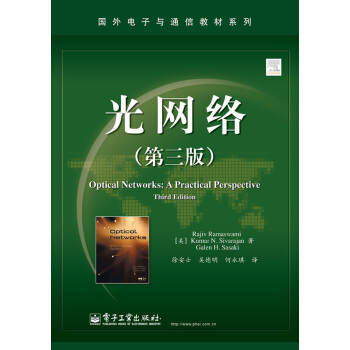
![原汁原味的美国口语教材:爱在纽约(第1册)(附光盘) [Love in NewYork(1)] pdf epub mobi 电子书 下载](https://pic.tinynews.org/11263437/rBEhVVHk8nYIAAAAAAHbkPBEHDAAABFBQDOw8QAAduo879.jpg)


![管理学基础(第2版)/高等院校“十二五”核心课程精品教材 [Fundamentals of Management] pdf epub mobi 电子书 下载](https://pic.tinynews.org/11326361/rBEhVlJE14EIAAAAAAHD65UPOwsAADm2ACG47IAAcQD309.jpg)
